It used to be that fall was a time for cleaning up the garden to make it winter ready. Winter ready used to mean that you cut everything down, cleaned it all up to a burn or compost pile, and then tilled the ground, leaving it bare and waiting until next spring.

More and more, those days are gone. Garden trends now embrace a more natural, balanced approach. It is no different in the flower garden.
On the balance, we do far more good for our flower gardens all around if we leave the “dead” things standing. In fact, there is a lot of benefit to doing this. For us, for our gardens, our soil, the birds and the bees and much more.
We’ve got at least six good -- no, great -- reasons for you to leave your dried and dead flower stalks standing right where they are this winter.
Jump to:
1. For the Birds (Food, That Is)
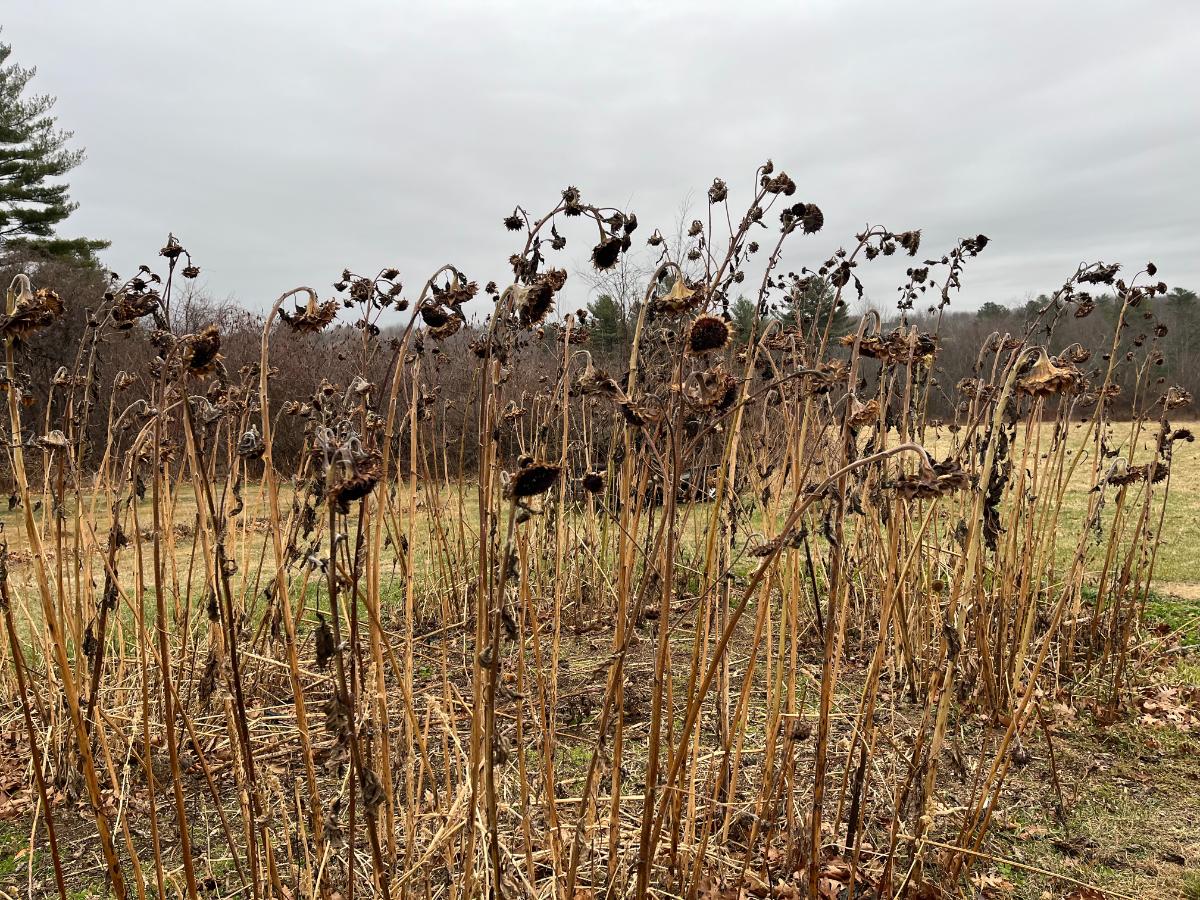
Seed heads on flower stalks are an excellent food source for the birds. If you grow native wildflowers and native perennials, you may find that they like these even better than what you might offer in a bird seed mix. They’re often a more natural and preferred food for them.
One of the advantages of leaving a food source like this is that all sorts of birds will mark your property as a place with resources. They’ll be more likely to make their homes nearby if you provide what they need.
Some of the most beneficial garden birds that help us to combat plant-eating insects are non-migratory birds. If you attract them and provide for them naturally through the winter, there is a good chance they’ll build their homes there, and then you'll have more of them around to help you naturally balance your garden in the growing months.
Winter is the hardest time for birds to find food, so it’s always a good thing to support them and to help them along. And this is an easy, free way to do that!
2. Overwintering Insects

Dead stems and stalks provide hollow, sheltered places for insects, eggs, and larvae to lie dormant. This in and of itself can do a lot to support the pollinators and beneficial insect population. Having more of them around in the spring and summer will be a big boon to all your gardens.
Of course, potentially it could be supporting less than welcome insects; but they have an important place in the ecosystem, too. And, supporting those birds and the insects’ natural predators helps to keep a working, natural balance that a balanced garden can often live with. (We’re talking about natural predators like beneficial ladybugs and other predatory beneficial insects that control the bad bugs and keep things in check.)
As you’ll see in number three, there is a good reason to let bad bugs overwinter, too.
3. Protein Source for Spring Birds and Chicks
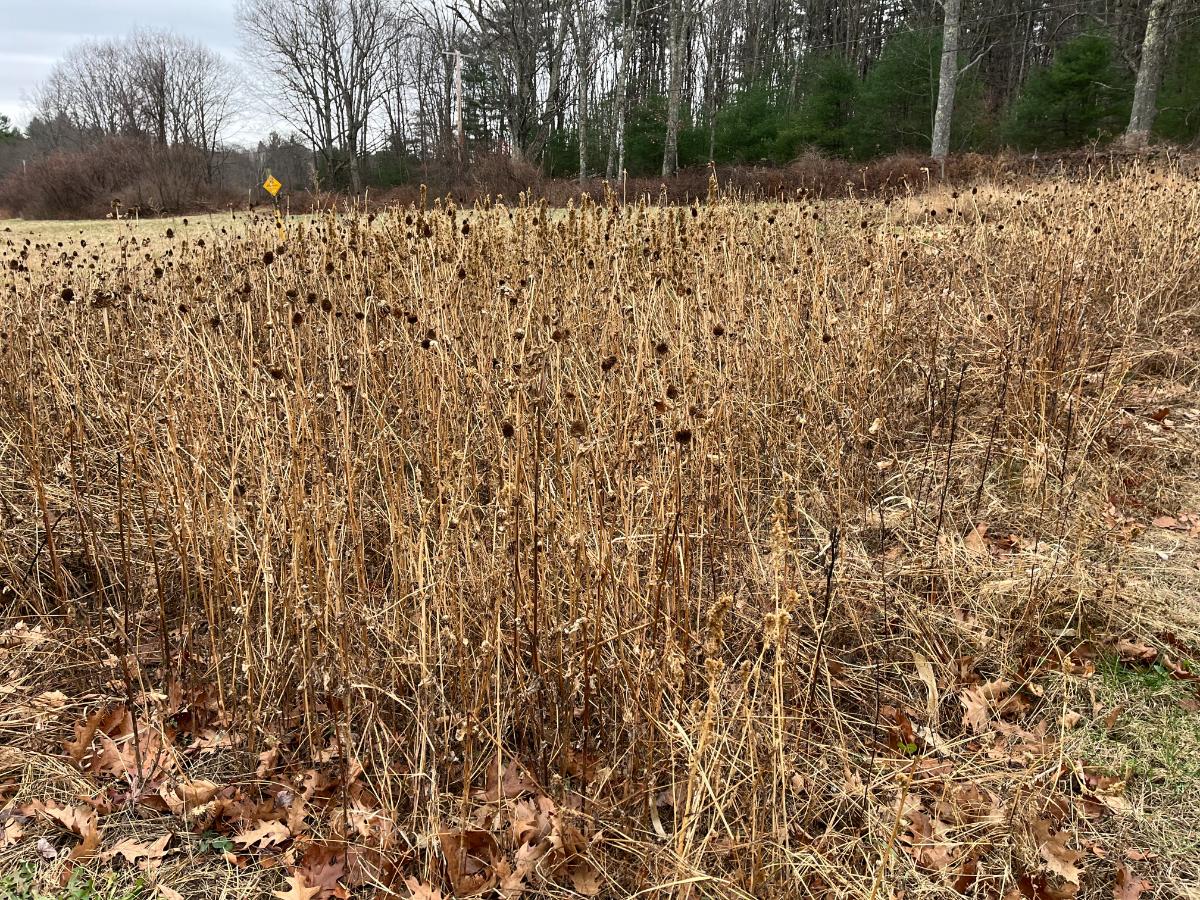
Even the “bad” bugs can serve a “good” purpose come spring. In the spring, the birds will be looking for sources of protein, especially for their new, young, developing hatchlings and chicks.
In the spring, protein sources for birds come largely from insects and larvae, worms, and caterpillars. If there are no habitats for those protein sources to overwinter and then grow, there is not enough protein to go around for the birds. And the birds and their next generation can really suffer.
So, leaving those stalks to stand and providing homes for those dormant and overwintering insects is another way that you can support the wild bird population. It’s especially useful for you to support protein-eating birds (as opposed to vegetarian seed and berry eaters) because when they come to your garden, they’ll be diminishing the insect population and acting as natural insect control for your plants.
But many of them will leave most or all of your berries, fruits, and vegetables alone. (Bluebirds, for example, are great birds to have in the garden. They are non-migratory in many locations, and the more you can provide for them, the more likely they are to move in and help you out!)
Your standing (or even fallen) flower stalks can be an important source of early spring food at a time when the birds will have few other options.
4. Protection for Your Perennial Plants!
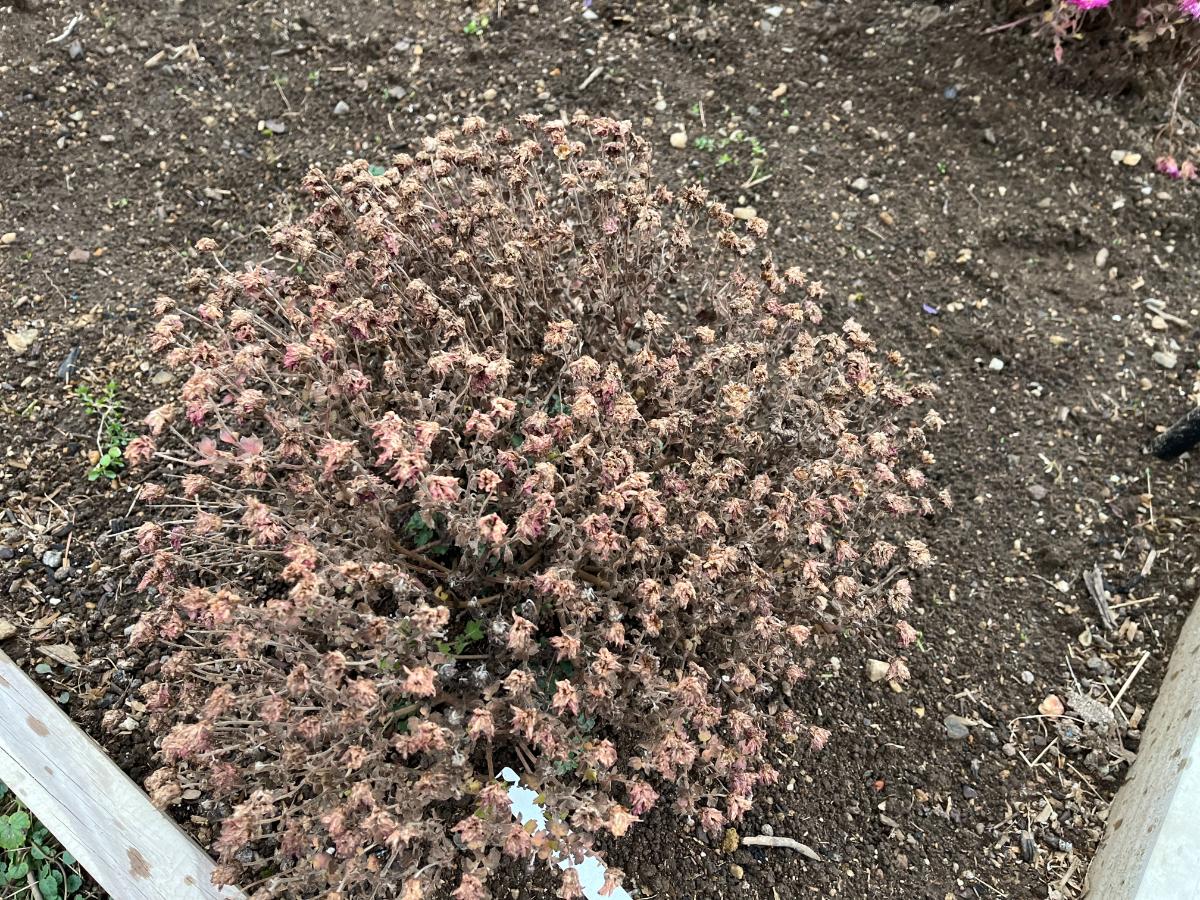
Leaving the stalks actually provides more protection from winter kill for your perennial plants. It’s actually best not to cut back perennials in the fall for this reason.
The stalks and stems create air pockets that increase the warmth at the crown and roots. When you have a winter storm, the stalks will catch and hold snow and ice. That keeps it in place longer, and also acts like insulation from the elements.
This reduces freeze drying and reduces cold damage to perennial plant crowns. It also moderates the soil temperature, keeping it more steady and less like to experience the ups and downs and heaving and contraction of bare plant roots and crowns.
Even if you don’t get snow, the stalks will buffer the crowns from exposure and elements. Soil is less likely to blow or erode away, which also means that moisture is less likely to escape, too. You may not realize it, but even dormant, frozen plants need some moisture so they (and their roots and crowns) do not dry out all the way.
5. Natural Reseeding
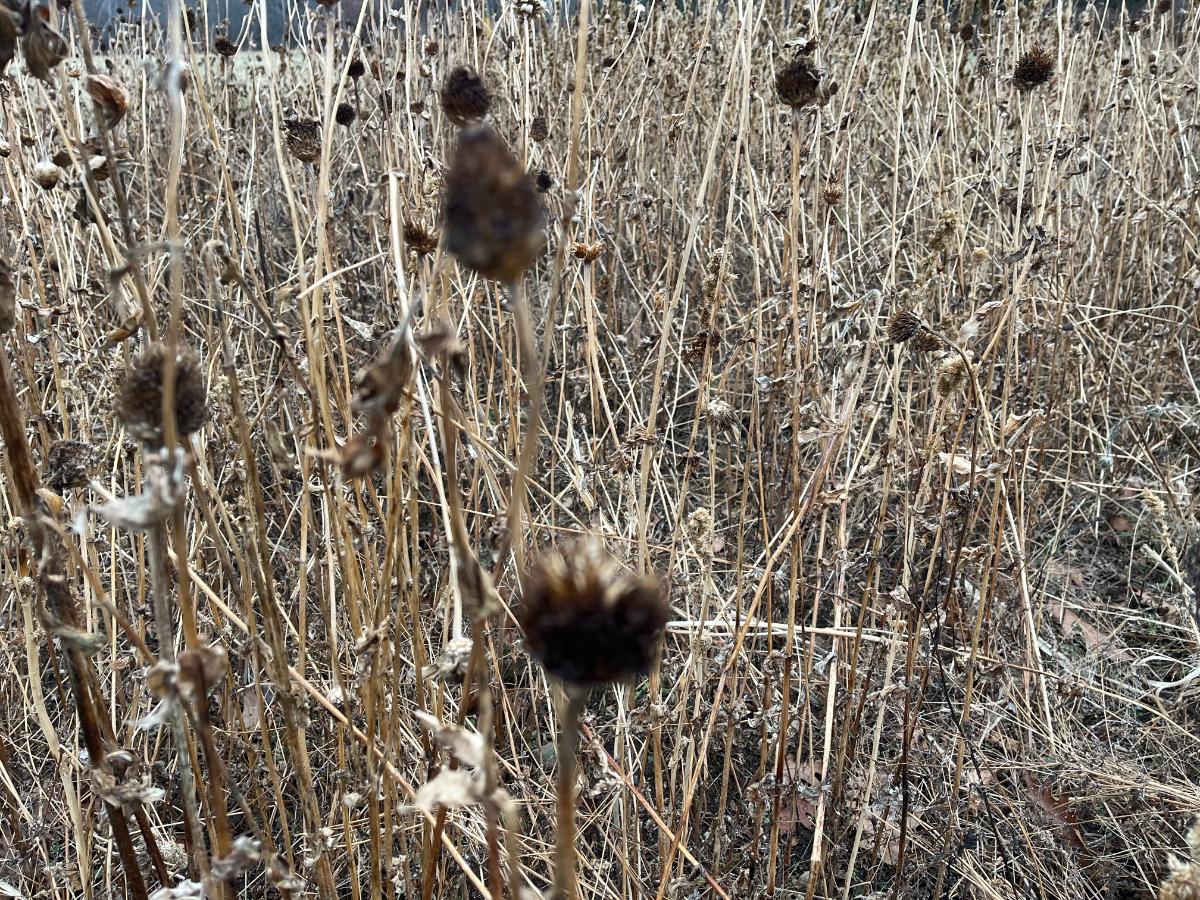
If you leave seed heads in place, your flowers can reseed. This is important if you want to establish a wildflower patch or wildflower meadow.
It can also result in the reseeding and volunteering of desirable but non-native flowers, like sunflowers (and many others). (Of course, what is native or not depends on where you live!)
In this way, standing stalks will basically plant your flower garden for you next year. All you have to do is make sure you don’t till them up or weed them out next spring!
It is true that leaving seeds for the birds to eat means you won’t have all the seeds left to reseed, but between the weather, elements, and the messy birds themselves, there’s usually enough to go around for everyone!
6. Less Work for You!
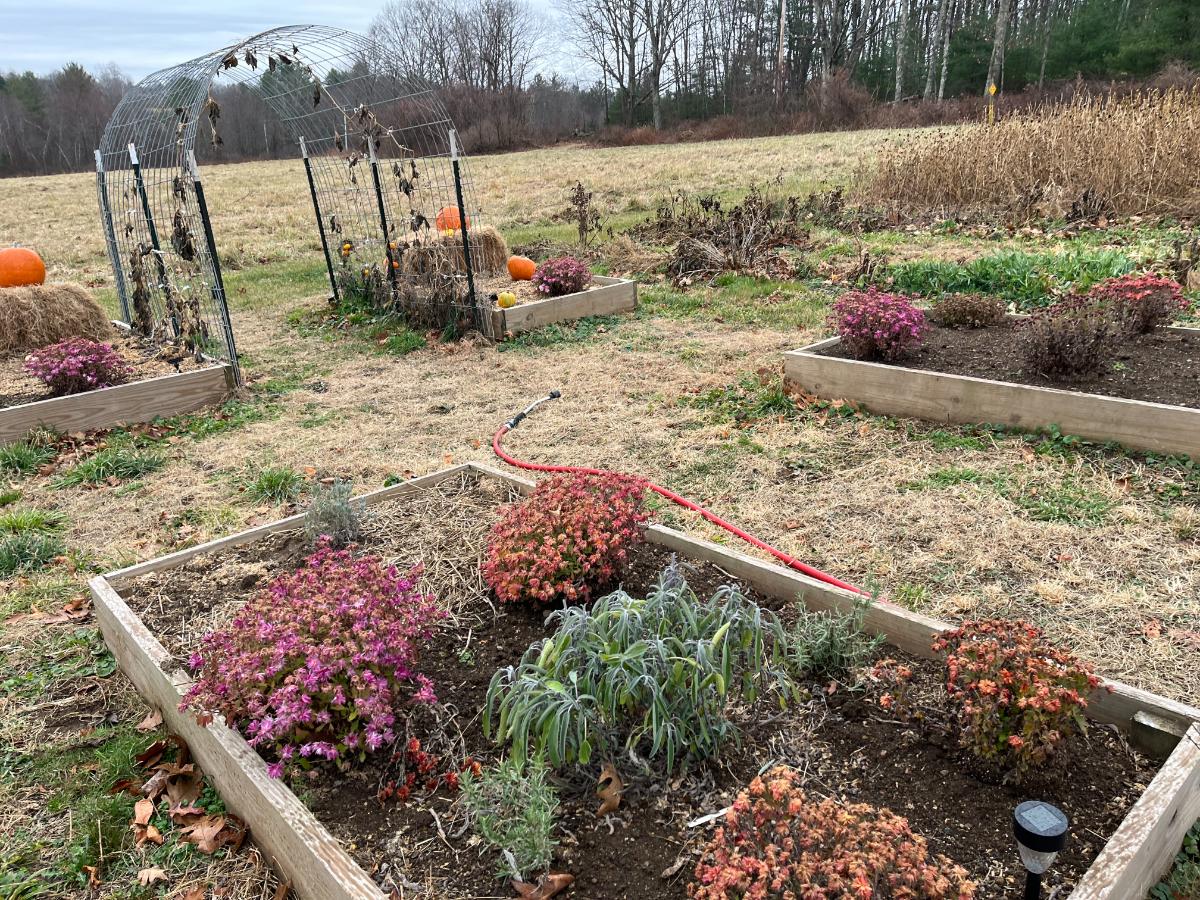
Finally, leaving the flower stalks standing means a whole lot less work for you in the fall. If you leave them to reseed, it even means less work and planting for you in the spring!
We do tend to create a lot of unnecessary work for ourselves in the garden. This is often to our, and the birds and wildlife’s, detriment.
It’s time we embrace the messy beauty of nature and take some (often really big) gardening tasks off our lists.
Enjoy a cup of tea by the fire instead!
Dried and Standing Dead is a Thing of Beauty, Too
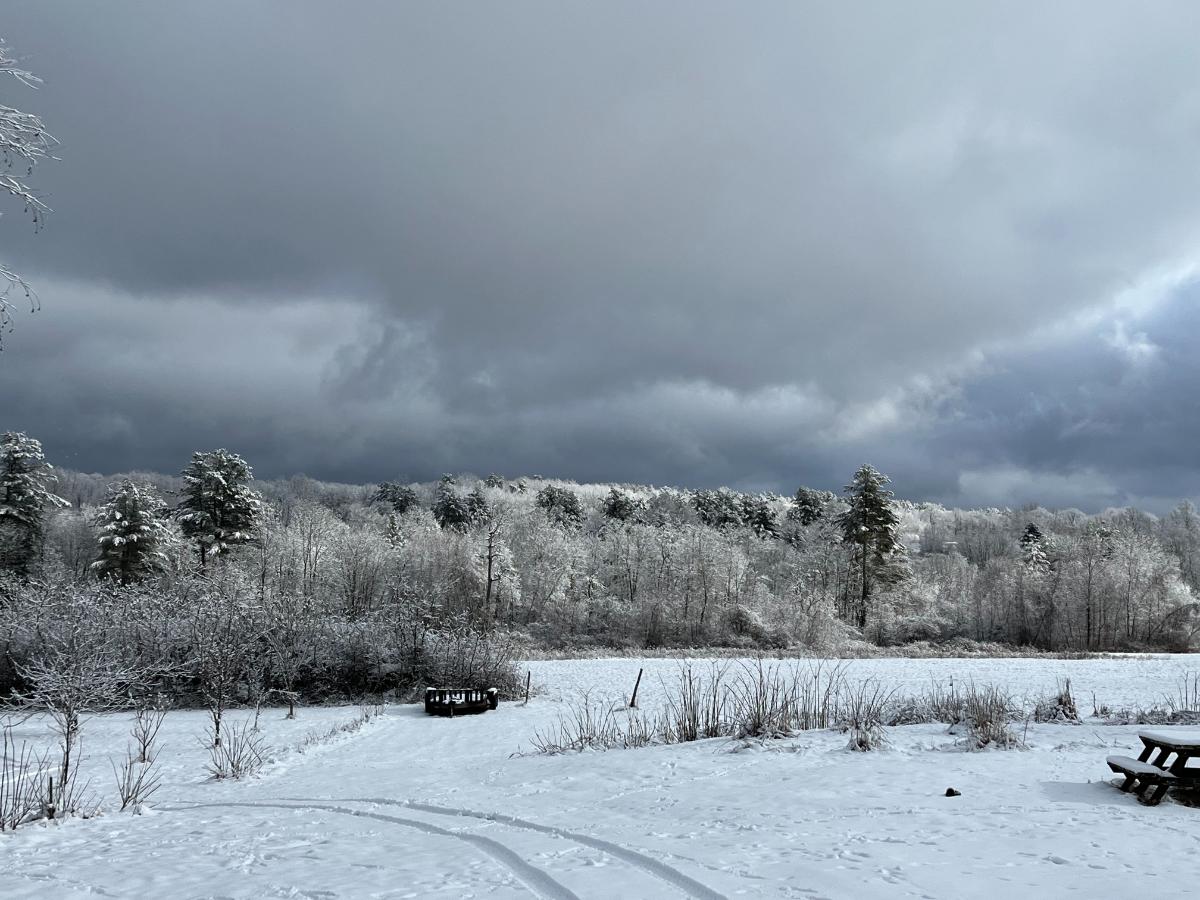
We often create a lot of our own problems in the garden. We create a lot of work that doesn’t really need to be done. Work that can have a quite negative effect. Even when the effect is neutral, it’s not positive and helpful in the way that supporting wildlife and protecting our plants is.
The biggest reason we do things like cleaning and tidying up garden beds and garden space in the winter is that we think dead and dormant, browning plants aren’t pretty. It’s time to change our point of view. See the beauty even in the dormant, dead months.
There’s beauty in the winter garden, even with all the standing stalks and stems, if we look for it; we just have to change our vision!
After all, have you ever seen the sun glistening off a snow or ice covered stalk, and watched the birds enjoy the buffet?

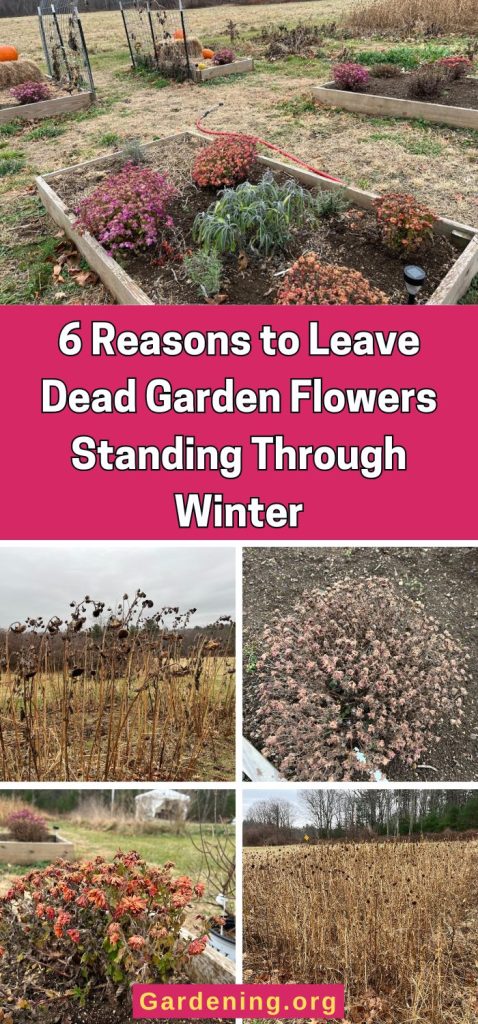
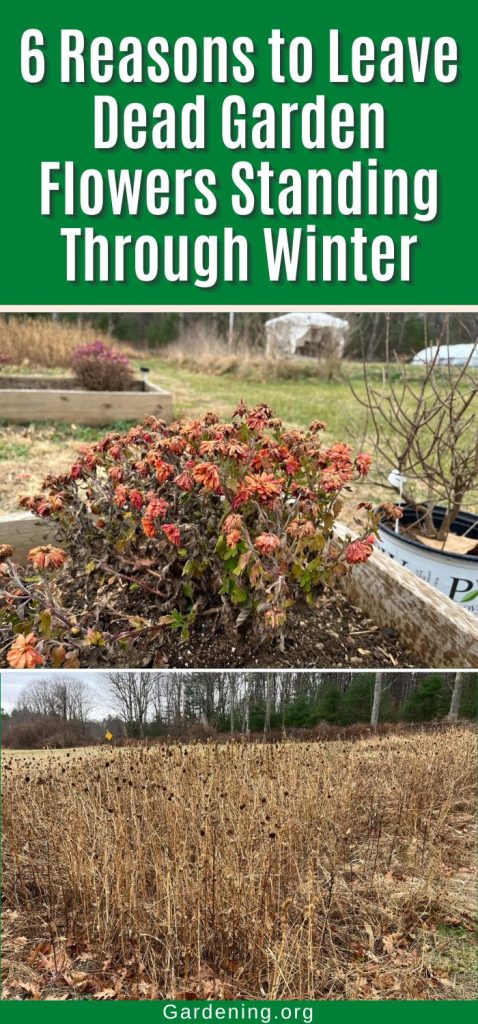
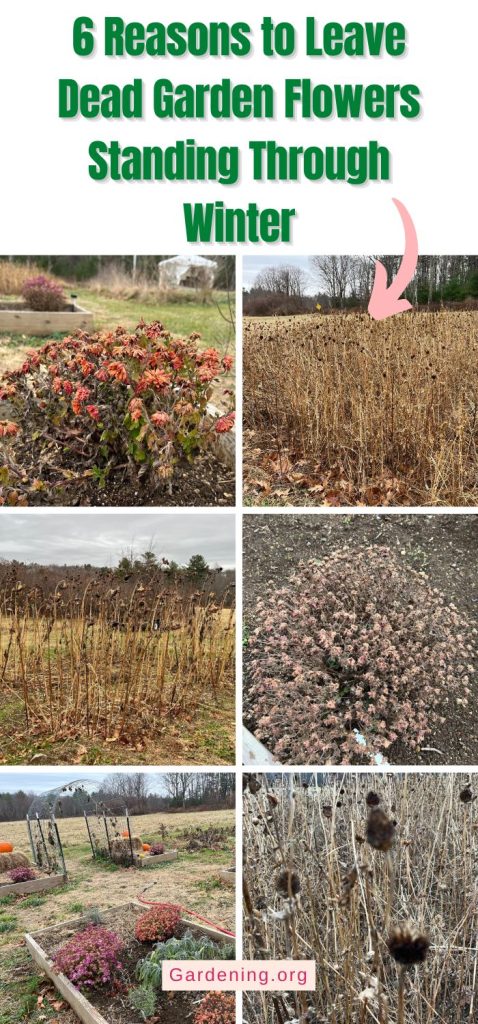
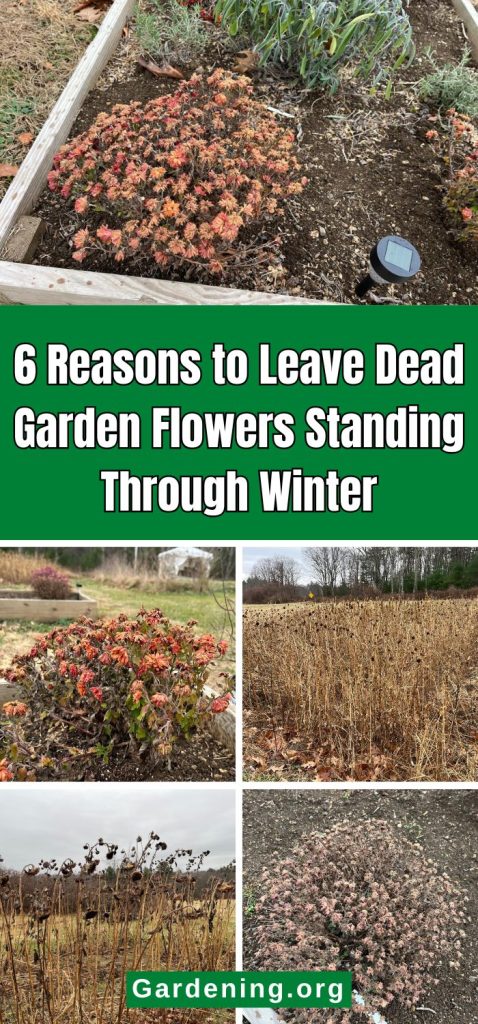




Leave a Reply